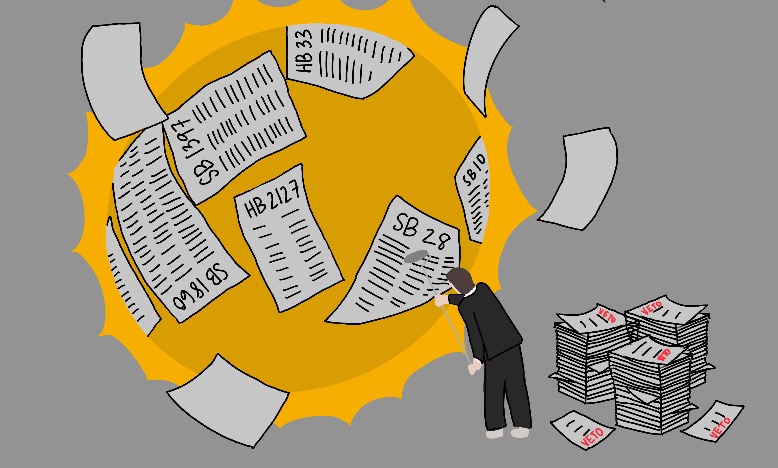This year, Austin experienced its hottest summer on record, reaching triple digits for 45 days in a row. With only 1.31 inches of rainfall, the season was also the driest the city has been in 113 years. Throughout the 78 100-plus degree days in 2023, Austinites have been forced to accept the unfortunate truth: Texas is only going to get hotter.
As we adjust to life in a triple-digit dystopia, it’s clear that reversing the effects of climate change isn’t a realistic goal. Instead, Policymakers should assume the worst about climate when deciding infrastructure and spending by planning for and expecting extreme weather conditions.
In an investigative report done by KXAN, it was found that the Lower Colorado River Authority (LCRA), which manages the water supply of at least 1 million residents, does not have a management plan that considers climate change. The LCRA is using Texas’ worst drought in history as a benchmark, not on predictions of future (and worse) drought conditions expected by climatologists. Instead of using readily available statistics that map out the future of Texas weather, the LRCA is relying on years-old data that has become obsolete in the face of climate change. As cities issue severe water restrictions and Senate Bill 28 becomes a law, putting more than $1 billion toward updating water infrastructure, Texas is moving in the right direction. But for life in a radar red zone to be tolerable, proactivity is needed far beyond water infrastructure.
McCallum students arrived on the first day of school to a building with a broken air conditioning system. Whether sweating buckets during a lecture or feeling frozen during a test, weather has an undeniable impact on learning. Although the district has funded short-term fixes like the temporary units placed in rooms that face frequent outages, this is not enough to keep students safe in record-breaking climate conditions.
Further, due to AISD heat guidelines, athletes were forced to cancel outdoor practices due to unsafe heat conditions well into September. Many schools, including McCallum, have limited space for athletics indoors, often leaving teams with nowhere to practice and giving schools with better facilities a game time advantage. Although turf fields are allocated for in the 2022 AISD Bond modernizations, they attract heat and can be dangerous, occasionally melting cleats or causing burns. Instead, Districts should build more indoor practice and game facilities that will be necessary for the inevitable future of fall sports.
But it’s not just heat-related issues that need to be planned for. In two of the past three winters, Austin residents have lost power due to extreme snow and ice storms. In both cases, some residents were left without heat or water for days before such necessities were restored. On Sept. 24, Austin and surrounding areas experienced an extreme storm with baseball-sized hail that not only damaged property and vehicles but also caused some homes to briefly lose power. Time and again, it has been proven that the Texas power grid just can’t sustain its residents under current climate conditions.
From water shortages to indoor facilities to power security, it is clear that Texas does not currently have the policy or infrastructure to adequately protect residents in the face of increasing climate threats. Legislators and policymakers need to heed the warnings of experts and plan for worst-case weather scenarios before they come knocking on our door.








